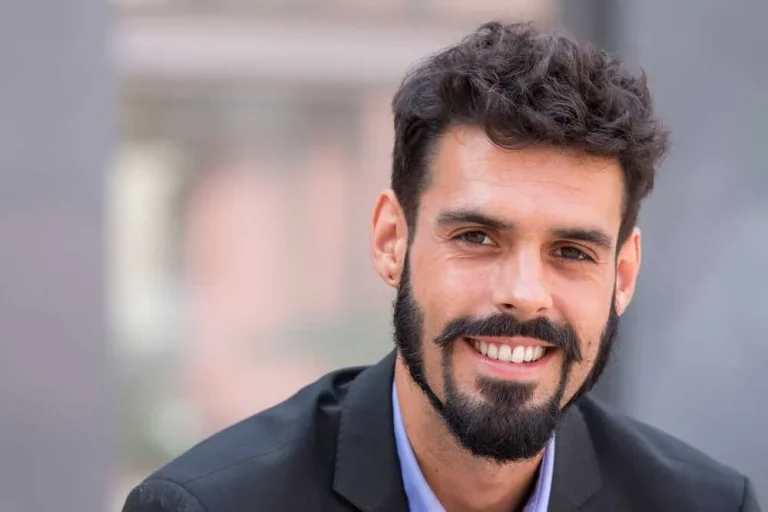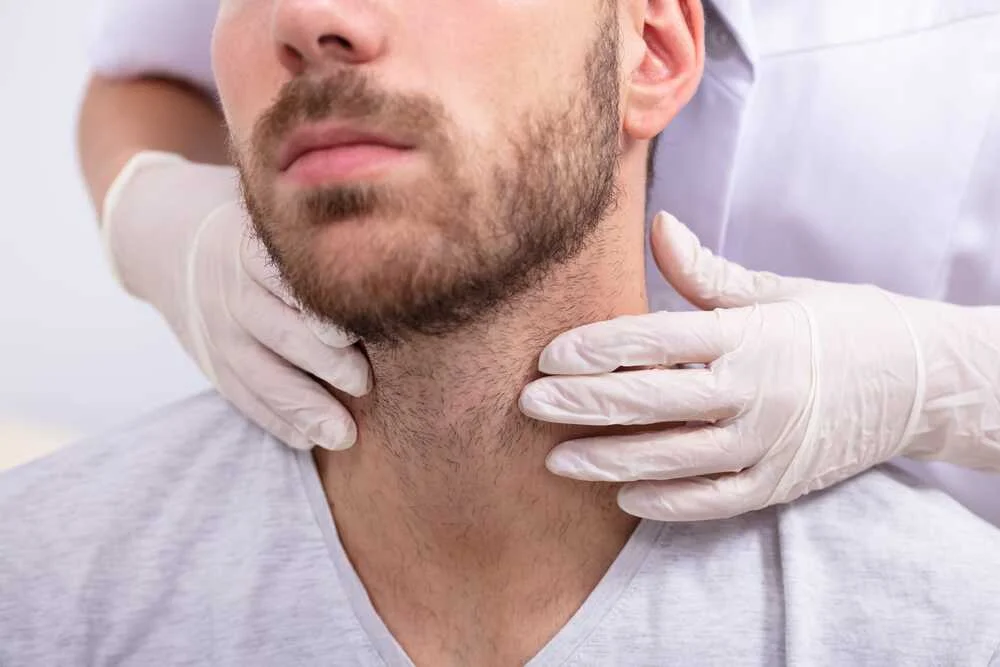A beard transplant is a growing solution for those struggling with patchy or sparse facial hair. Whether you have areas that are not growing hair or you’re looking to improve the overall density and shape of your beard, a beard transplant can offer a long-term solution.
In this step-by-step guide, we’ll explain what it is, how the procedure works, and the benefits you can expect from this hair restoration treatment.
"Style is a way to say who you are without having to speak."
Rachel Zoe
The Growing Popularity of Beard Transplants
Facial hair has become a defining feature for many men in recent years, with beards gaining more popularity in the grooming industry. However, some men struggle with uneven, sparse, or patchy beards, which can be frustrating and affect their confidence. For those who have tried various methods to grow a fuller beard with no success, a beard transplant offers a permanent solution.
A beard hair transplant has gained recognition for its ability to provide natural-looking, long-lasting results. Using hair from a donor area (usually the back of the head), the transplanted follicles are carefully placed into the areas of the face that need more density. Let’s explore the details of how it works and what you can expect from the process.
What is a Beard Transplant?
Definition and Overview
A beard transplant is a surgical procedure that involves transferring hair follicles from a donor area on your scalp (or other areas of your body) to areas of the face where hair growth is sparse or absent. The process is similar to a hair transplant for the scalp, but is specifically tailored for the unique requirements of facial hair. The goal is to create a fuller, more defined beard by strategically placing hair follicles in areas with little to no growth.
Who Can Benefit from a Beard Transplant?
It is suitable for individuals who experience patchy, uneven, or sparse facial hair, especially those who have:
- Thinning or non-existent beard growth: People who find it difficult to grow a full beard due to genetics, age, or hormonal factors.
- Scarring or hair loss: Those who have lost facial hair due to scarring from acne or other injuries.
- Desire for a better-defined beard shape: People looking to improve the density or shape of their current beard.
For most people, the beard hair transplant offers a permanent and natural solution for facial hair restoration.
How a Beard Transplant Works
Initial Consultation
The process starts with an initial consultation with a qualified hair restoration specialist. During this meeting, the surgeon will assess the patient’s facial hair pattern, donor area, and overall health. The doctor will discuss expectations and goals and determine whether you’re a suitable candidate for a beard transplant. It’s essential to provide your medical history, as certain conditions may affect your eligibility for the procedure.
Donor Area Selection
The next step in the procedure is selecting the donor area. The most common donor area for a beard hair transplant is the scalp, specifically the back or sides of the head, where hair tends to be thicker and denser. The quality of the donor hair is important because it needs to match the existing facial hair in texture and color. In some cases, body hair can also be used as a donor source if scalp hair is insufficient or unsuitable.
Harvesting Hair Follicles
Once the donor area is selected, the surgeon will proceed with harvesting hair follicles. This is done using a technique known as Follicular Unit Extraction (FUE), which involves removing individual hair follicles from the donor area. FUE minimizes scarring and provides a more natural-looking result. The follicles are then prepared for transplantation, ensuring that they are healthy and ready for placement.
The Transplantation Process
Preparing the Recipient Area
After the follicles are harvested, the recipient area (the part of the face where the hair will be transplanted) is prepared. The surgeon will clean and numb the area to minimize discomfort. Tiny incisions are made in the recipient area, mimicking the natural growth pattern of facial hair.
Placing the Hair Follicles

The final step in the beard transplant procedure is placing the hair follicles in the recipient area. Using specialized tools, the surgeon will carefully implant the follicles into the tiny incisions. The placement of the follicles is critical, as the angle, direction, and density of the hair follicles must match the natural growth pattern of the beard. This ensures that the results will look natural and blend seamlessly with the existing facial hair.
Post-Procedure Care and Recovery
Immediate Aftercare
After the procedure, patients can expect some redness, swelling, and minor discomfort in both the donor and recipient areas. These symptoms usually subside within a few days. The surgeon will provide detailed instructions on how to care for the transplanted area. This typically includes recommendations to avoid touching or scratching the area, using gentle shampoos, and refraining from direct sunlight exposure for the first few days.
Recovery Timeline
The recovery time for a beard transplantation is relatively short. Most patients can return to their regular activities within a few days, although strenuous physical activities should be avoided for about two weeks. The transplanted hair will shed within a few weeks, which is a normal part of the process. New hair growth will begin within a few months and will continue to grow thicker over time.
Follow-Up Appointments
Follow-up appointments with the surgeon are essential to monitor the progress of hair growth and ensure that the transplant has been successful. These appointments typically occur a few weeks, a few months, and then a year after the procedure. The surgeon will check the overall health of the transplanted hair and provide guidance on maintaining the beard.
Beard Growth After Transplantation
What to Expect in Terms of Results
After the beard transplant, patients will notice the initial shedding of the transplanted hair. This is completely normal and happens as the transplanted follicles adjust to their new environment.
New hair growth will begin in the weeks following the shedding, and results will become more apparent after about 6 months.
The final results of it will be visible after 12-18 months, as the hair continues to grow and thicken. Most patients experience a fuller and more defined beard that looks entirely natural.
Hair Shedding Post-Transplant
Hair shedding after a beard hair transplant is common. The transplanted hair follicles go through a resting phase shortly after the procedure, which may cause the transplanted hair to fall out. This shedding is temporary and part of the natural hair growth cycle. As the follicles begin to grow again, the hair will gradually fill in the transplanted area, providing a fuller and more even appearance.
Long-Term Maintenance
Once the beard transplant has fully settled, the maintenance required is minimal. Regular grooming, trimming, and moisturizing are essential to keep the beard looking neat and healthy. There is no need for frequent touch-ups or reapplications of products. The results are permanent, and with proper care, your new beard will continue to grow for many years.
Beard Transplant Cost
Understanding the Cost
The beard transplant cost can vary depending on several factors, including the surgeon’s experience, the location of the clinic, and the number of grafts required. On average, the cost can range from $3,000 to $10,000. Prices will also vary based on the complexity of the procedure and whether additional treatments (such as PRP therapy) are used in conjunction with the transplant.
Is It Worth the Investment?

For many men, a beard hair transplant is a worthwhile investment. The results are permanent, and it offer a significant improvement in both appearance and confidence. Compared to temporary solutions like makeup or hair fibers, a beard transplant offers a long-term, natural solution that can enhance one’s overall look.
When considering the cost of the procedure, it is important to weigh the benefits of having a fuller, well-groomed beard that boosts self-esteem and confidence. While the cost may be high, the permanent results often make it a valuable investment.
Recap of Key Steps in the Beard Transplant Procedure
A beard transplant is an effective and permanent solution for men who struggle with patchy, uneven, or thin facial hair. The procedure involves a detailed step-by-step process that includes an initial consultation, harvesting hair follicles from the donor area, and carefully transplanting them into the recipient area. Post-procedure care and recovery are essential for ensuring the success of the transplant, with most patients seeing full results within 12-18 months.
The benefits of a beard hair transplant are clear: natural-looking, long-lasting results, increased coverage, and a significant improvement in the appearance of facial hair. Whether you’re looking to restore a patchy beard or enhance the overall shape of your facial hair, it can help you achieve your goals.Consulting with a qualified specialist is crucial to understanding if you’re a suitable candidate for the procedure and to ensure the best possible outcome. With the right care and expertise, a beard transplant can provide you with a beard that complements your facial features and boosts your confidence.
If you are considering body hair transplantation, take the time to consult with a professional hair restoration expert. They can assess your individual situation, discuss your options, and help you set realistic expectations for the procedure. It could be the solution you need to restore hair where you need it most and boost your confidence for the long term.

